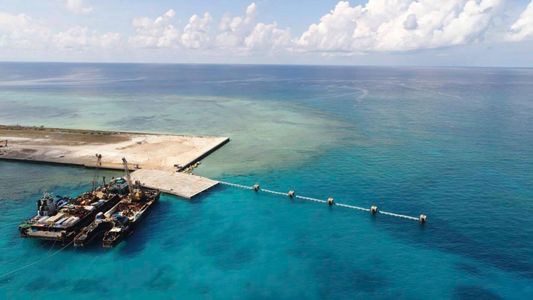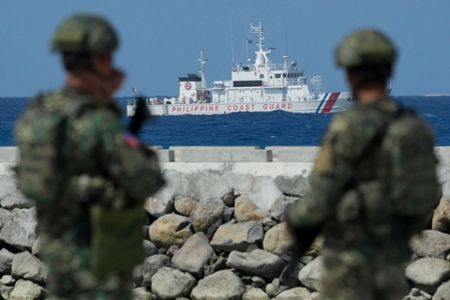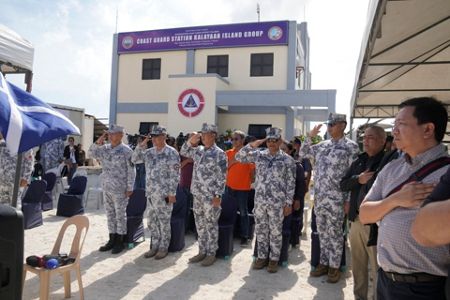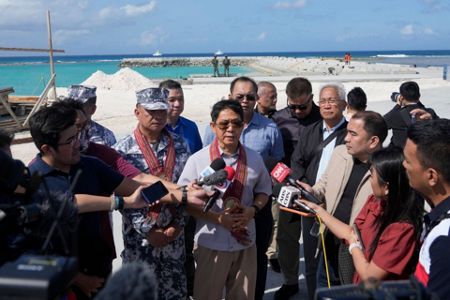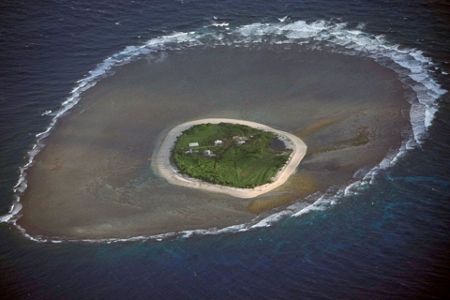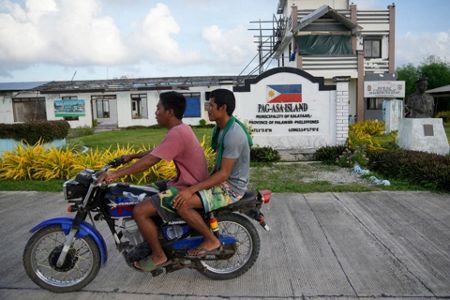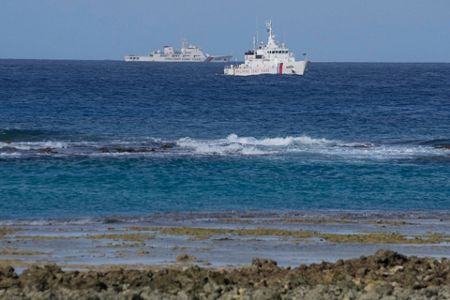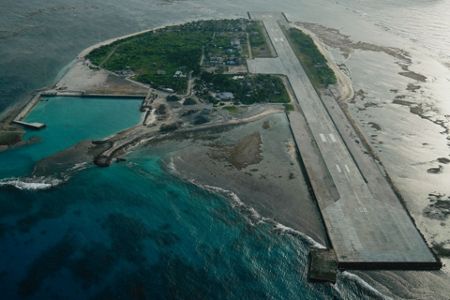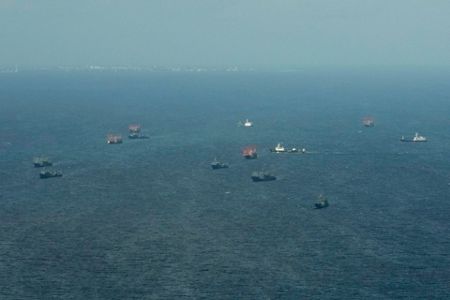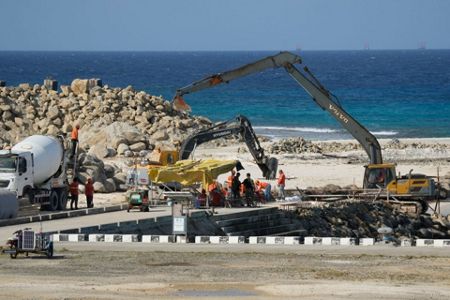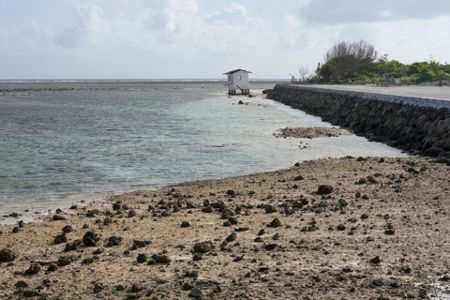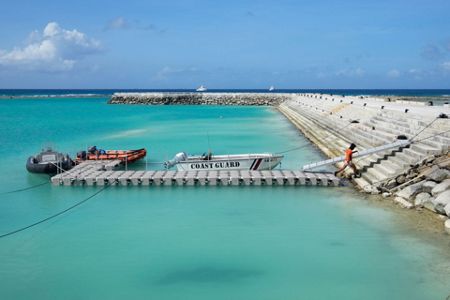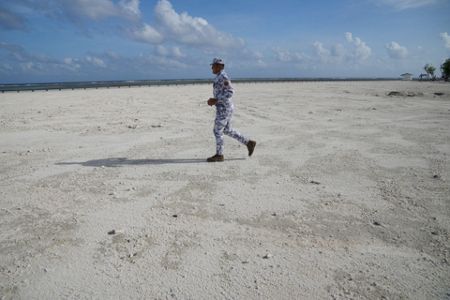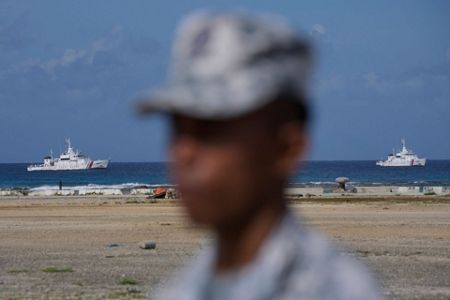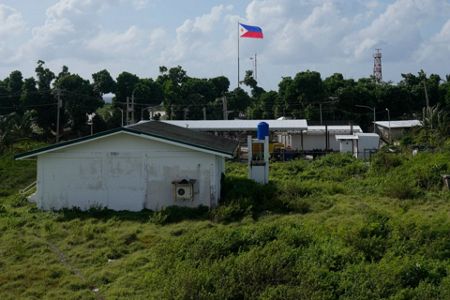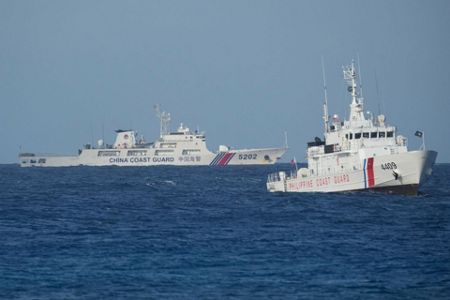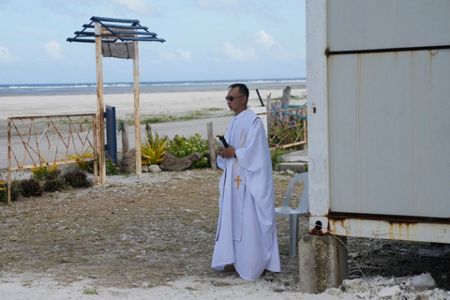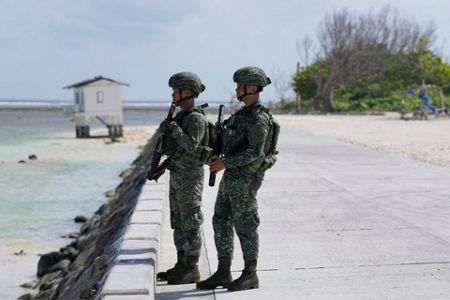THITU ISLAND, South China Sea (AP) — The Philippines inaugurated a new coast guard monitoring base Friday on an island occupied by Filipino forces in the disputed South China Sea and plans to expand joint patrols with the United States and Australia to counter China’s “pure bullying” in the strategic waterway, a Philippine security official said.
High-seas faceoffs between Chinese and Philippine ships have intensified this year in the contested waters, fueling fears of a larger conflict that could involve the United States. The U.S. has repeatedly warned that it’s obligated to defend the Philippines, its oldest treaty ally in Asia, if Filipino forces come under an armed attack, including in the South China Sea.
China has accused the U.S. of meddling in an Asian dispute and sowing discord in the region.
National Security Adviser Eduardo Ano and other Philippine officials flew to Thitu Island on an air force plane Friday and led a ceremony to open the newly constructed, two-story center that will have radar, ship-tracking and other monitoring equipment to monitor China’s actions in the hotly disputed waters and other problems, including sea accidents.
"It's no longer gray zone. It’s pure bullying,” Ano told reporters after the seaside ceremony, describing the actions of Chinese ships as openly flouting international law.
Dwarfed by China’s military might, the Philippines decided this year to allow an expansion of the U.S. military presence in its local camps under a 2014 defense pact. It also recently launched joint sea and air patrols with the United States and Australia in a new deterrence strategy that puts the two allied powers on a collision course with Beijing.
Ano said the separate joint patrols involving the U.S. and Australia would continue and could expand to include other nations like Japan once a security agreement being negotiated by Tokyo and Manila was concluded.
"We're open to like-minded countries to join as observers or participants,” Ano said.
China has warned that such joint naval patrols must not hurt its “territorial sovereignty and maritime rights and interests."
Despite Manila’s counter-actions, China reasserted its claim to the sea on Friday.
As the Philippine air force aircraft carrying Ano, presidential adviser Andres Centino, Philippine coast guard chief Admiral Ronnie Gavan and other officials approached Thitu, Ano said Chinese forces transmitted a radio warning for them to stay away.
Ano said the Filipino pilots dismissed the message and in turn routinely asserted Philippine sovereign rights and control over the area.
Peering later through a mounted telescope on the island, Ano said he spotted at least 18 suspected Chinese militia ships scattered off Thitu, including a Chinese navy vessel.
Villagers say they have gotten used to the sight of Chinese ships lurking at a distance from Thitu, but a few say they’re still haunted at times by the fear of Chinese forces arriving on the island.
"I can't avoid thinking sometimes that they would suddenly barge into our territory,” said Daisy Cojamco, a 51-year-old mother of three whose husband works as a town government employee.
Surrounded by white beaches, the tadpole-shaped Thitu Island is called Pag-asa — Tagalog for hope — by about 250 Filipino villagers. It’s one of nine islands, islets and atolls that have been occupied by Philippine forces since the 1970s in the South China Sea’s Spratlys archipelago.
The Philippines claims the region as its most remote offshore township, under its western island province of Palawan. It has encouraged fishing families to move there with incentives such as free rice, to underscore its control over an area also claimed by China and Vietnam.
The 37-hectare (91-acre) island now boasts internet and cellphone connections, a more stable power and water supply, a newly cemented runway, a wharf, grade school, gymnasium and even an evacuation center in times of typhoons. However, Thitu remains a meagre frontier settlement compared to the Chinese-built Subi island, more than 22 kilometers (14 miles) away.
Subi is one of seven mostly submerged reefs that China transformed starting about a decade ago into a missile-protected cluster of island bases, three of them with military-grade runways, sparking alarm among other claimant states in the South China Sea.
Early this year, the administration of President Ferdinand Marcos Jr. launched a strategy of exposing China’s provocations in the South China Sea to bring the actions more international attention, according to Philippine officials.The administration reported the Chinese coast guard’s use of a military-grade laser and water cannons and the blocking of Philippine patrol ships and supply boats near disputed shoals, ,
Speaking in Honolulu, where he met U.S. military leaders about two weeks ago, Marcos said the situation in the South China Sea “has become more dire” with China showing interest in atolls and shoals that are “closer and closer” to the Philippine coast.
But he stressed that the Philippines wouldn’t yield.
"The Philippines will not give a single square inch of our territory to any foreign power,” Marcos warned.
___
Follow AP's Asia-Pacific coverage at https://apnews.com/hub/asia-pacific
Copyright 2023 The Associated Press. All rights reserved. This material may not be published, broadcast, rewritten or redistributed without permission.




